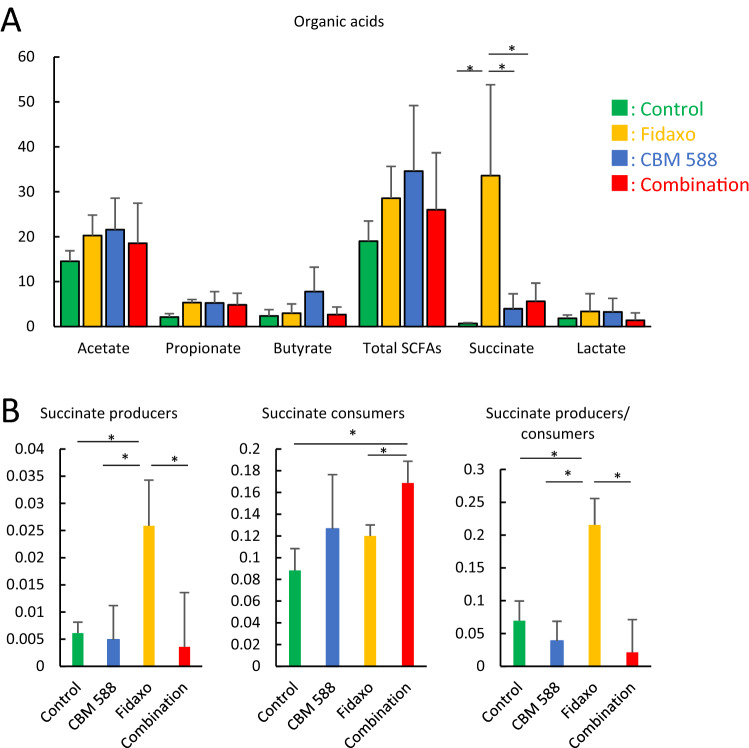Figure 3.
C. butyricum changed gut microbiome profiles to modulate gut succinate level. (A) Concentration of organic acids in fecal samples taken at day 4. (green: control group, yellow: fidaxomicin group, blue: CBM 588 group, red: combination group) All values are mean ± SD (n = 5–10). (B) Effect of fidaxomicin and CBM 588 administration on relative succinate producer and consumer species abundance in the fecal samples. Data represent the relative abundance (%) mean values of relative abundances ± SD (n = 5–10). Succinate producer: Propionibacterium spp., Alistipes spp., Paraprevotella spp., Parabacteroides spp., Blautia spp., Faecalibacterium spp., Citrobacter spp., Succinivibrio spp., Akkermansia spp., Succinate consumer: Bacterides spp., Clostridium spp., Phascolarctobacterium spp., Ruminococcus spp., Dialister spp., Veillonella spp. (reference 12).

